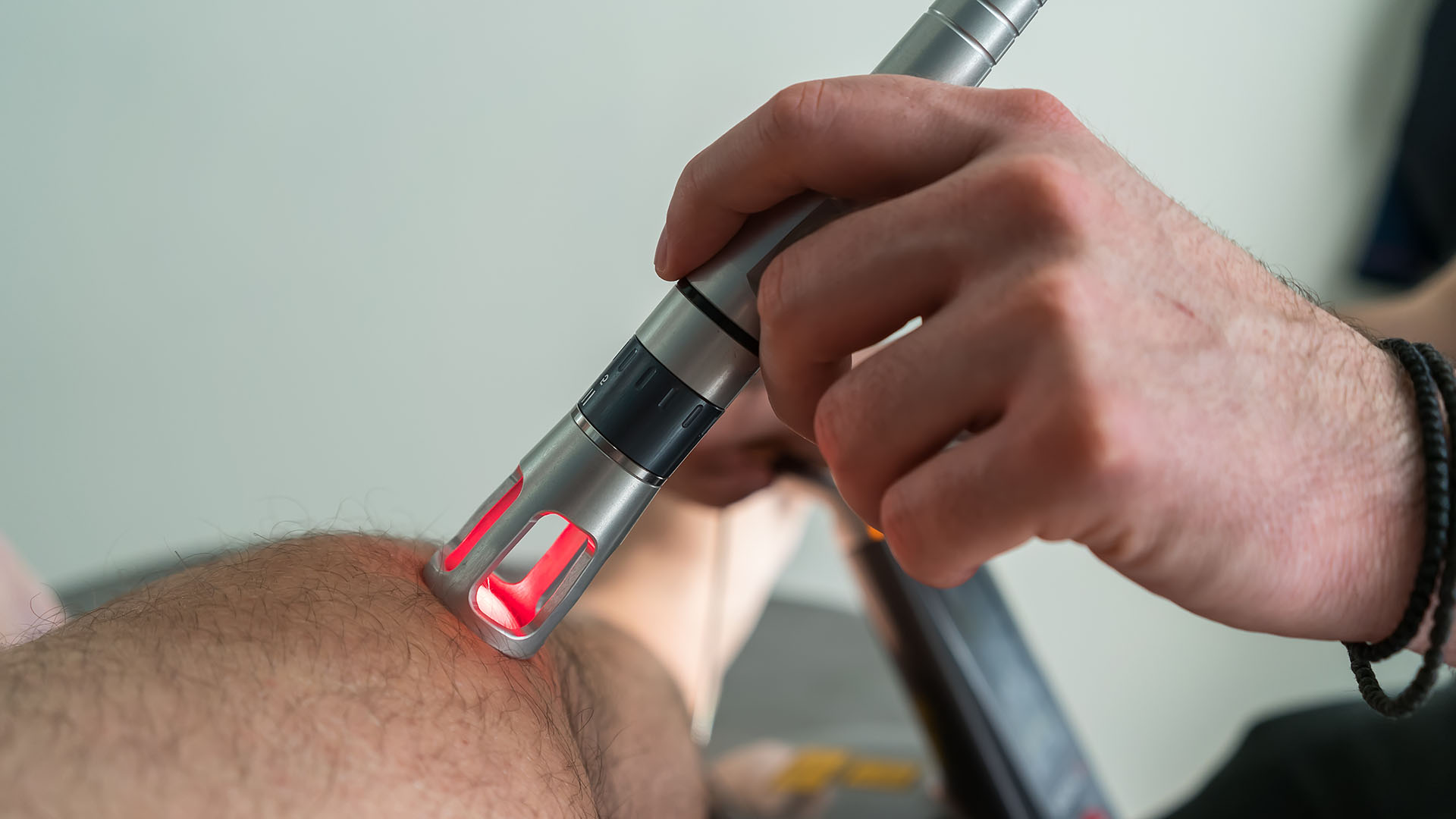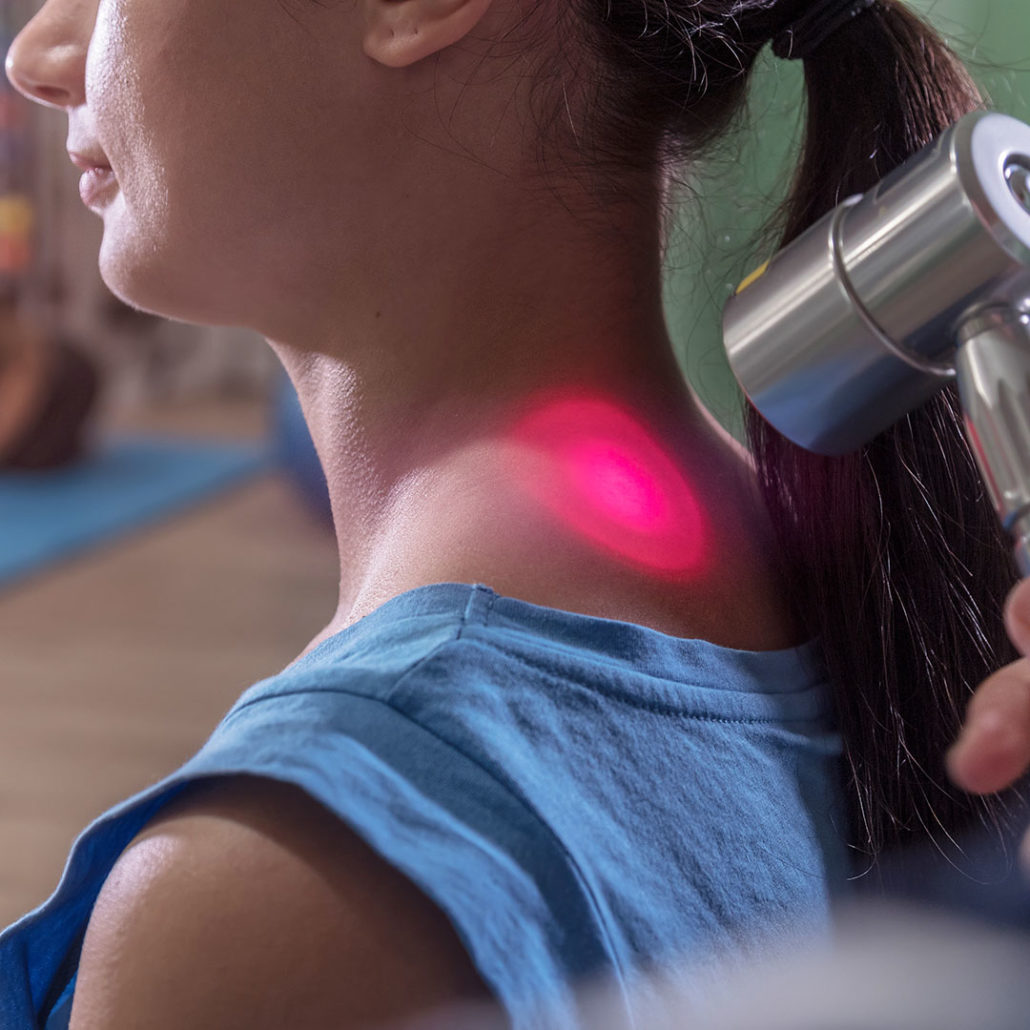Low-Level Laser Therapy
The use of laser light of low intensity, which stimulates the cells and tissues and quickens the healing process.

The use of laser light of low intensity, which stimulates the cells and tissues and quickens the healing process.
Low-level laser therapy (also called cold laser therapy, low power laser therapy or soft laser) is a non-invasive method of treatment where the body is exposed to laser light of low intensity, which stimulates the cells and tissues and quickens the healing process. Unlike surgical lasers, LLLT is non-destructive, painless and works on bio-stimulation (increasing the activity of residential microflora by providing factors limiting their growth and activity) and is a fantastic alternative to surgery and/or drugs.
LLLT is FDA approved and can be used by doctors, dentists, physical therapists, and other medical professionals in a variety of ways. Over the past decade, lasers and light-based systems have been well studied and have become a common modality to treat a wide variety of conditions and health problems, including sports injuries, inflammatory conditions, and skin conditions, although current researchers are further expanding the scope of therapeutic use for LLLT as a treatment option for those with neurodegenerative disorders. In addition, studies suggest that low-level laser therapy is effective on pain, muscle spasm, morning stiffness, burns, carpal tunnel, and fibromyalgia.
Clinical experience has shown that low-level laser therapy may be used for a number of conditions and issues and that the benefits include:
Low-level laser therapy works by stimulating cellular growth and rejuvenation to the applied area. Applied by a special laser beam generator, the affected body part is exposed to a low-intensity laser, which produces photon energy. This energy is transformed into biochemical energy and the cumulative effect after subsequent sessions at set intervals restores the normal functioning of the cells.
Once the light energy passes through the layers of skin and reaches the target area, it is absorbed and interacts with the light-sensitive elements in the cell. This process can be compared to photosynthesis in plants – sunlight is absorbed, which is then converted to usable energy so the plant can grow. These benefits that ensue are a result of amplified and synchronized infrared light (laser beam) at a certain wavelength (600-1000nm) that triggers a cellular and biochemical process, including ATP and collagen production and increased blood flow to the affected area.
In other words, low-level laser therapy works on two basic principles: it increases cellular regeneration and increases cellular communication. When laser light is absorbed by living cells, it triggers biological reactions that stimulate the production of a variety of chemicals within the body that are then released and carried by the blood and lymphatic flow to other parts of the system. It is important to note that the lasers do not actually induce any temperature change in the body’s tissues.
There are four distinct effects associated with low-level laser therapy:
Treatments can last as little as 5 minutes, or as long as 20 minutes and most people feel nothing at all during, although some feel a slight tingling sensation due to the increased blood flow to the area being treated. The actual effect of laser therapy begins at the time of treatment, but generally only becomes noticeable several hours or even days after. Patients often have to return to the doctor for treatment numerous times to achieve long-term success depending on the severity and duration of the condition.

“I admit to being biased—originally against it, and now energetically in favor of more widespread use of this valuable technology…I can spend 45 minutes to one hour inactivating all of the patient’s trigger points without fear of drug toxicity, setting off widespread pain, or incurring any risk or pain associated with the treatment. Patients can then participate in stretching, general exercise, and activities of daily living (ADLs), and avoid bed rest after their treatments.”
BERNARD E. FILNER, MD
Low-level laser therapy has been used clinically for over 40 years and the applications have been extensive, involving dermatology, respiratory conditions, arthritic conditions, dentistry, sports medicine, soft tissue and bone healing, pain, nerve lesions, and hair loss.
(LLLT) is a promising tool for rheumatic diseases, and a systematic Cochrane review suggests that LLLT could be considered in rheumatoid arthritis management due to positive outcomes for pain and morning stiffness.
source: Low Level Laser Therapy [LLLT] in Inflammatory and Rheumatic Diseases:A Review of Therapeutic Mechanisms, Current Rheumatology Reviews, 2007
Role of Low-Level Laser Therapy in Neurorehabilitation. Conclusion: LLLT is steadily moving into mainstream medical practice. LLLT has no reported adverse effects. The high benefit: risk ratio of LLLT should be better appreciated by medical professionals in the rehabilitation and physical medicine specialties.
source: Role of Low-Level Laser Therapy in Neurorehabilitation, HHS Public Access, 2010
Published in ‘Dental Materials’ in 2014, an analysis of limited studies related to the oral cavity indicates that LLLT may be a reliable, safe and novel approach to treating a range of oral and dental disorders and in particular for those which there is an unmet clinical need.
source: Developments of low level light therapy (LLLT) for dentistry, Dental Materials, 2014
At the New York Center of Innovative Medicine, low-level laser therapy is one of many different treatments considered for each patient. However, the use of this therapy is only performed on patients after an in-depth initial evaluation reveals it would be necessary for your personalized program of treatment. Because each person is unique, and their health needs are different, there is no set protocol for using low-level laser therapy nor is the patient able to request the use of this therapy if the medical team finds it would not be as helpful as another treatment or specific combination of therapies. The ultimate goal is the complete restoration of health in the most efficient and safe manner, and with so many therapeutic options, it is impossible to know if low-level laser therapy is right for you without an initial evaluation at our clinic.
Contact NYCIM and Book Your Appointment Today
or
» Take Our Questionnaire to See if You’re a Good Candidate
or
» See Additional NYCIM Services & Therapies
Innovative Medicine is about restoring your body and mind’s power to heal itself. Learn how to tap into your unique healing potential by signing up for our newsletter.

 Lecher Antenna
Lecher Antenna
Leave a Reply
Want to join the discussion?Feel free to contribute!